When you choose vinyl for your home fence, you’re investing in your property. It increases curb appeal and helps protect your children and pets.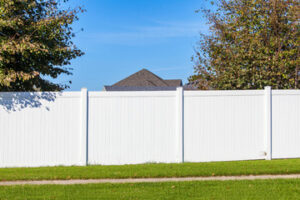
Vinyl Fence In NJ lasts much longer than wood fences and can withstand much more punishment. They are also easier to keep clean. With no need to repaint, sand and stain, or worry about termites, they require minimal upkeep and will look great for years.
They are incredibly strong and have five times the tensile strength of wood, meaning they can take on a lot more than other fence materials. They are also weather-proof and resist damage from wind, rain, sand, and salt water. Vinyl is a man-made product that is extruded and manufactured with exact precision, which allows for uniformity and strength. This makes it impervious to the elements that cause decay in organic products, such as wood.
Because of this, vinyl fences are less likely to rot or break. They do not need a protective coat of oil or stain, and their color is not susceptible to sun damage as long as the vinyl has been made with UV inhibitors. These are usually found in higher-quality vinyl fences, so it is worth the extra cost to get a vinyl that will hold up to our Florida sun for many years.
In addition to their durability, most vinyl fences come with a manufacturer warranty that lasts up to 50 years. This warranty covers any repairs or replacements that need to be made to the vinyl. Some vinyl fences even have a limited lifetime warranty, which means that the manufacturer will replace any damaged parts of the vinyl fence for life.
Another benefit of vinyl is that it is 100% recyclable, which means that you can recycle it again and again without affecting the environment or degrading its quality. It can be recycled by melting and reusing the material again, or it can be broken down into its chemical components, which can then be used to create new vinyl.
One disadvantage of vinyl is that you cannot change its molded design or color, so it’s a “what you see is what you get” kind of deal. For this reason, homeowners who want more freedom in modifying their yard’s appearance might choose to go with a wooden fence.
Styles
Vinyl fences are available in a wide variety of colors, styles, textures, and add-ons. They can be a beautiful addition to any home, especially when it comes to curb appeal. They also offer the privacy, security, and safety benefits that many homeowners seek from a fence. Unlike wood, vinyl does not require chemical treatments to be pest-resistant or attractive. The lack of stains, paints, and other chemicals reduces the amount of VOCs (volatile organic compounds) that are released into the environment.
For a traditional look, choose a classic style of vinyl fence. This type of fencing evokes the nostalgia of old-fashioned pickets, but is less expensive and more durable than wood. It is available in two-tone options to match your home color and accentuate its appearance.
Another option for a traditional vinyl fence is the lattice top. This style is a bit more stylish than simple solid privacy fences, and can add a little more visual interest to your yard. It features crisscrossed vinyl panels on top of evenly spaced posts.
This style can be a great option for people who want privacy but don’t want a completely solid wall. It offers privacy from the sides, but still allows you to see through to your neighbors’ property. This type of vinyl fence is also less expensive than a classic style, and requires less maintenance to maintain its beauty.
Lastly, you may want to consider a vinyl fence that features a gate. This can be an excellent way to add a sense of entryway to your property and keep children, pets, and other unwanted guests out of the pool or garden. Vinyl fence gates are usually easy to open and close, making them a convenient and safe way to access your property.
While the benefits of vinyl are clear, it is important to weigh its pros and cons before deciding on the best type of fencing for your needs. Be sure to look at the current cost of materials and labor and compare prices between companies. Also, make sure to look for professional-grade virgin vinyl, rather than a cheaper in-stock or DIY alternative. Thicker vinyl is more durable and resistant to damage from harsh weather conditions like high winds.
Low Maintenance
A good fence adds a touch of beauty to your property and enhances its value. It also helps deter intruders and makes your home safer for your children and pets. However, fences require periodic maintenance to keep them in good condition. This is why many homeowners are choosing vinyl fences, as they require less upkeep than wood or chain link fences.
Aside from a little upkeep and washing, you don’t need to stain or paint your vinyl fence. This is a big plus for people who want to keep their yards looking good without spending a lot of time on yard work. Vinyl fencing is also water-resistant, so you don’t have to worry about it rusting or becoming damaged by rain or snow.
While the material is durable, it can still be damaged by heavy objects or strong winds. If you are in an area prone to these conditions, it is best to have your vinyl fence checked for damage regularly and have any repairs made immediately.
One drawback of vinyl is that it does not last as long as a wood fence, and the color may fade over time. This is why some homeowners choose to get a wooden fence instead. Another concern is that vinyl is not a natural material, and some eco-conscious buyers might avoid this option.
Like most materials, vinyl can be damaged by chemicals, such as a lawn care product or a car wash. Therefore, it is important to use non-abrasive cleaners for cleaning your vinyl fence. You can find these at most hardware stores and garden centers. In addition, it is important to rinse the surface of your fence to remove any residue.
When washing a vinyl fence, it is important to follow the manufacturer’s instructions for the type of cleansers you can safely use. The best way to remove stains and mildew is by using a sponge or cloth soaked in a mixture of non-abrasive household detergent and water, then hosing it off with a hose. You should also avoid harsh chemicals, as they can damage the vinyl and lead to discoloration.
Cost
When shopping for a vinyl fence, it is important to consider the upfront costs. These prices will vary depending on style, height, and cost of current materials, yard size, and installation fees. Purchasing a vinyl fence is an investment and will likely increase the curb appeal of your home as well as the overall value. This is a great benefit if you plan to place your house on the market in the future or if you would like to increase your property’s resale value.
While the initial price of a vinyl fence is more expensive than other fencing options, it is more affordable in the long run due to its low maintenance requirements. The initial investment will pay off when you realize how much money you are saving on expensive repairs and replacements.
In terms of appearance, the clean lines and modern design of a vinyl fence is aesthetically pleasing and complements most homes. In addition, the material is more environmentally sound than other options since it requires minimal fossil fuels to be made from ethylene and chlorine (sources of everyday salt). It also requires less energy to install compared to other fence materials such as wrought iron.
It is important to purchase a high-quality vinyl fence from a reputable dealer and manufacturer. Purchasing your fence from a big box store is an option, but you may not be getting the best quality or expert advice. It is also important to review the warranty of the product to ensure that it will last and be covered in case of any damage or defects.
Another disadvantage of vinyl is that it is not as customizable as other fencing materials. The molded design and color is set at the time of manufacture and cannot be changed, unlike wood that can be painted or stained at any point. This may be a deal-breaker for some homeowners who prefer more traditional or customized fencing.
In addition, vinyl fences are prone to fading over time and can lose their vibrant colors. If the product is not kept in a protected location and exposed to the elements, it can become discolored and dull. The use of an all-purpose cleaner and dish soap will help to keep your fence looking new and pristine.




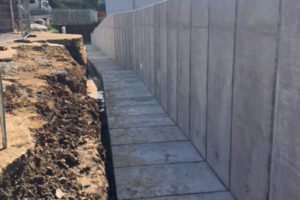

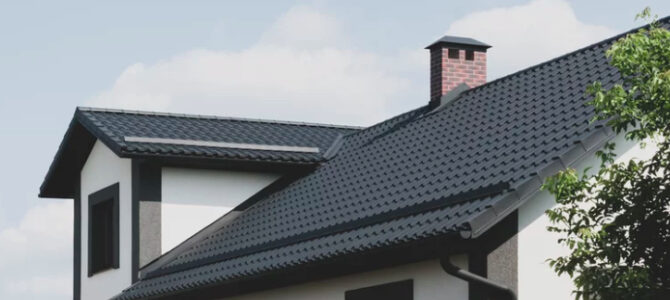
 Your roof protects your home and everything in it. Without it, you’d be exposed to rain, wind, hail, insects, and other hazards that can quickly ruin your home. Whether your roof is brand new or well past its prime, it can sustain damage during storms and other environmental events that can leave you with costly repairs. That’s why it’s important to stay on top of your roof maintenance and repairs to keep it in good condition.
Your roof protects your home and everything in it. Without it, you’d be exposed to rain, wind, hail, insects, and other hazards that can quickly ruin your home. Whether your roof is brand new or well past its prime, it can sustain damage during storms and other environmental events that can leave you with costly repairs. That’s why it’s important to stay on top of your roof maintenance and repairs to keep it in good condition.

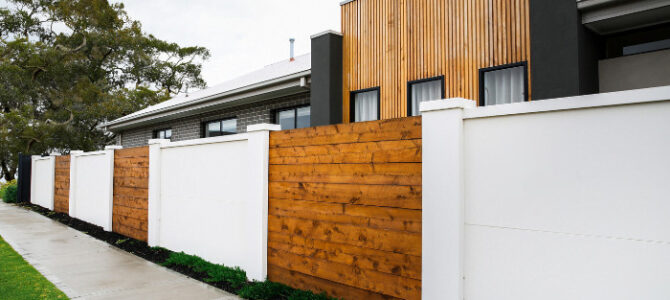
 A boundary wall can be a great way to add aesthetic value to your property. It can be designed in various styles and materials, but choosing a wall design that complements the style of your home and surrounding landscape is important. It is also important to consider local council regulations when choosing a front and boundary wall design. These may include restrictions on wall height, materials, or specific design elements.
A boundary wall can be a great way to add aesthetic value to your property. It can be designed in various styles and materials, but choosing a wall design that complements the style of your home and surrounding landscape is important. It is also important to consider local council regulations when choosing a front and boundary wall design. These may include restrictions on wall height, materials, or specific design elements.


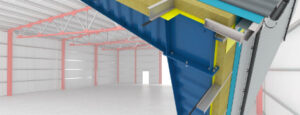 Steel structures can be used to build various buildings, including warehouses, churches, storage centers, and even office spaces. They can also span longer distances, making them an excellent option for larger structures. Steel building frames can be designed to meet local area codes and load limits, which helps ensure that your new structure will be safe and up to code.
Steel structures can be used to build various buildings, including warehouses, churches, storage centers, and even office spaces. They can also span longer distances, making them an excellent option for larger structures. Steel building frames can be designed to meet local area codes and load limits, which helps ensure that your new structure will be safe and up to code. 